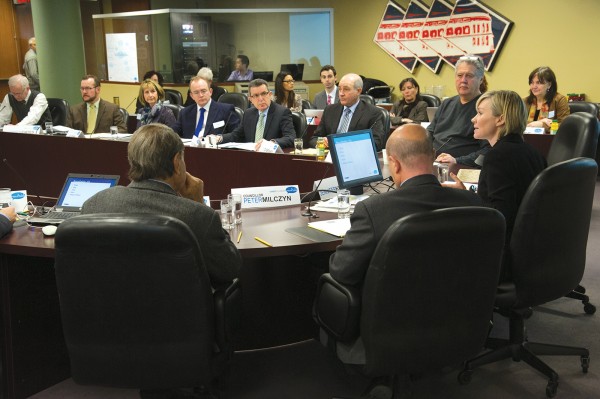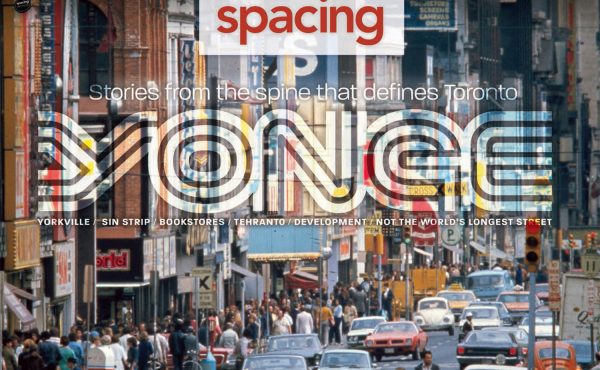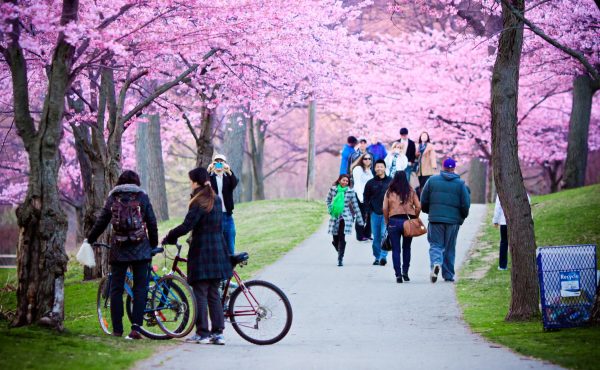WHAT: The Shape of Toronto’s Suburbs
WHEN: Monday, September 30, 2013
WHERE: City Hall, Committee Room 2, 100 Queen Street West
TIME: 9:30 am – 12:30 pm
The purpose of this Chief Planner Rroundtable is to broaden our understanding of the real physical context of Toronto’s suburban landscape, and to challenge the mythology of these areas. It will begin with six presentations made by the roundtable participants. John Van Nostrand will start with an overview of how the physical form of subdivisions after World War 2 created a new kind of form beyond the grids of the older city. Graeme Stewart will describe a phenomenon familiar to Torontonians: Tower-in-the Park neighbourhoods. Pamela Blais will examine how current taxation and public policy has reinforced the suburban form, and Leona Savoie will discuss the financial challenges of suburban intensification and how the realities of physical change – ranging from community consultation to process – might be better managed. Leo DeSorcy and Laurie Payne
will showcase some recent examples of suburban transformation, including the resulting built form and land uses, and the process to get there. The presentations will lead into an open roundtable discussion, moderated by the Chief Planner, looking at ways in which growth might be better managed in the suburbs.
OVERVIEW OF TORONTO SUBURBS
Shifts in the patterns of settlement and vast economic expansion following World War Two resulted in the rapid growth of Toronto’s suburbs. The population of the area now known as Toronto doubled between 1945 and 1980, and the resulting housing boom forever changed its suburban landscape. Curved disconnected street systems were preferred over the grids of the older streetcar neighbourhoods. Land uses were separated. Private automobiles replaced public transit as the preferred way of moving about, and trucks replaced trains for moving goods and materials.
Department stores and movie theatres spread from the downtown and main streets, and into regional malls. These trends and their impact upon the suburban form were fuelled by the rise of a new cultural force: pursuit of the “suburban dream”. The desire to move away from the crowded and polluted city into a detached house with backyard and car port within close proximity to the new “superhighway” system and local amenities saw the rise of communities such as Don Mills, Humbertown, Victoria Village, and Guildwood. New apartment tower communities set within spacious environments provided alternative housing options away from the downtown. As was the style of this time, these communities were planned to deliberately “turn their backs” to the city: road networks were internal and disconnected from the larger city grid; buildings focussed towards the interior of their site rather than outwards to public streets; and the tower developments provided for single-use housing, rather than mixed-use communities.
These trends were not unique to Toronto, but they have permanently influenced the shape of our city, and reinforced the mythology of the suburbs as places of unplanned sprawl. But there are many exceptions to this myth. One is that many parts of the suburbs are still highly desirable places to live, and in these areas, the suburban lifestyle is still very much alive. In all areas, however, the very qualities which the suburbs were built upon – the provision of adequate light, landscaped open space, and traffic-free cul-de-sacs – are the same qualities which make them desirable today. Pressure for land and development stemming from the current period of rapid growth is creating a growing urban/ suburban tension, as planners and policy-makers strive to accommodate this growth. More and more, this tension is compounded by cultural diversification, changing notions of “community”, and the struggle to preserve local character and identity.
ABOUT THE CHIEF PLANNER ROUNDTABLE:
The Chief Planner Roundtable is a public forum for Torontonians to discuss key city-building challenges. Civic leaders and industry professionals meet to review challenges and opportunities, and to identify the various paths towards resolution of the issues at hand. Residents and members of the public are encouraged to participate by attending the sessions in person or watching them live-streamed on the internet, and by submitting comments and questions by Twitter or comment card.
The first roundtable series was held in the spring 2013. One of the conclusions stemming from this series was that the suburbs warranted much greater discussion and examination. For this reason, the entire fall roundtable series is focusing on the suburbs. The first of these, “The Shape of the Suburbs” being held on September 30, is an examination of the physical form of the suburbs. The second (October 28) will focus on social issues, and the third (November 25) will focus on mobility.






2 comments
Traffic-free cul-de-sacs also make them very unwalkable. One needs a car to get out of the cul-de-sac to get to a store or school.
W.K., true, unless there are walkways that cut across those cul-de-sacs. I feel cul-de-sacs with cross-cutting walkways are actually quite attractive to pedestrians. Of course none of that matters if there is nothing in walking distance anyway.